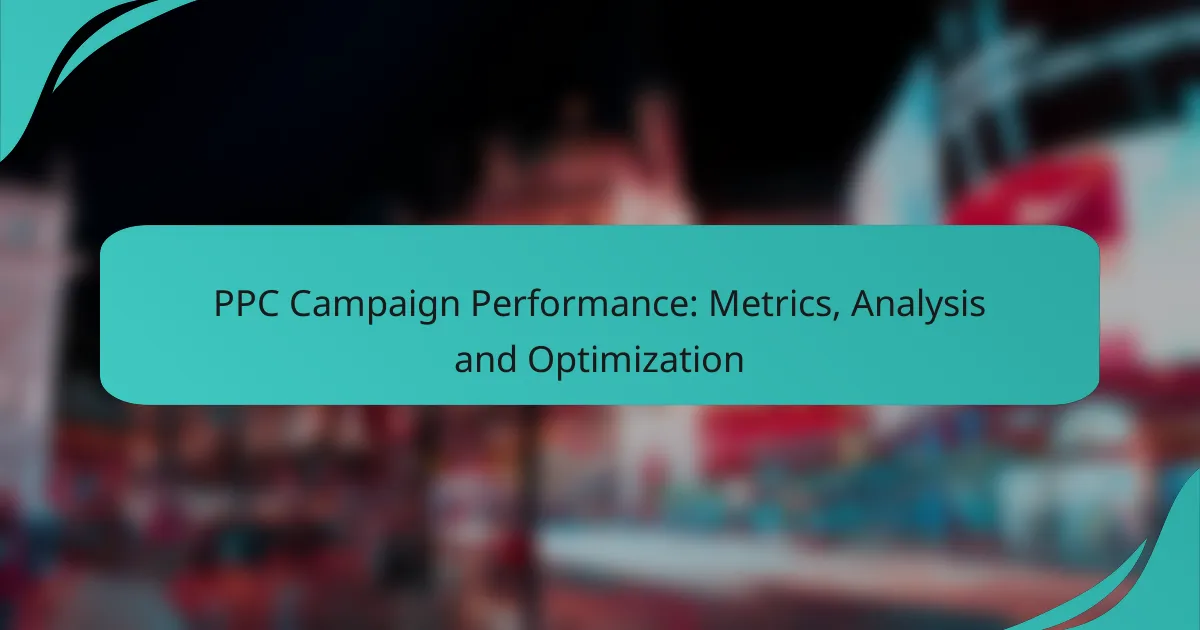Quality Score is a critical metric used by search engines to assess the relevance and quality of your ads, keywords, and landing pages. A higher Quality Score can result in lower costs per click and better ad placements, making it essential for optimizing online advertising efforts. By improving ad relevance, landing page experience, and click-through rates, advertisers can enhance their Quality Score and achieve a more effective return on investment.

How can you improve your Quality Score in the UK?
Improving your Quality Score in the UK involves enhancing ad relevance, landing page experience, and expected click-through rates while effectively managing negative keywords. By focusing on these areas, you can lower costs and increase ad performance.
Optimize ad relevance
Ad relevance measures how closely your ads match the intent of the keywords you are targeting. To optimize this, ensure that your ad copy directly reflects the keywords and the user’s search intent. Use specific phrases from your keyword list in the ad text to create a strong connection.
Regularly review and update your ads to align with changing trends and user behavior. A/B testing different ad variations can help identify which messages resonate best with your audience.
Enhance landing page experience
A well-optimized landing page is crucial for improving your Quality Score. Ensure that your landing page loads quickly, ideally within a few seconds, and is mobile-friendly. The content should be relevant to the ad and provide a clear value proposition to the user.
Utilize clear calls to action and ensure that the page is easy to navigate. Providing a seamless user experience can significantly reduce bounce rates and increase conversions, positively impacting your Quality Score.
Increase expected click-through rate
Expected click-through rate (CTR) reflects how likely users are to click on your ad based on its position and relevance. To increase CTR, craft compelling ad copy that includes strong calls to action and highlights unique selling points.
Utilize ad extensions, such as site links and callouts, to provide additional information and encourage clicks. Monitoring performance metrics can help you identify which ads are underperforming and need adjustments.
Utilize negative keywords
Negative keywords prevent your ads from showing on irrelevant searches, which can improve your Quality Score by increasing ad relevance. Regularly review search terms to identify keywords that do not convert and add them as negative keywords to your campaigns.
This practice helps to refine your targeting, ensuring that your ads reach a more relevant audience, ultimately leading to better performance and lower costs.
Conduct A/B testing
A/B testing allows you to compare different versions of your ads and landing pages to determine which performs better. Test one variable at a time, such as headlines or calls to action, to isolate the impact of each change.
Make data-driven decisions based on the results of your tests. Continuous testing and optimization can lead to significant improvements in your Quality Score over time, helping to maximize your advertising budget.

What is Quality Score?
Quality Score is a metric used by search engines to evaluate the relevance and quality of ads, keywords, and landing pages. A higher Quality Score can lead to lower costs per click and better ad placements, making it crucial for effective online advertising.
Definition of Quality Score
Quality Score is a numerical value, typically ranging from 1 to 10, assigned to keywords in pay-per-click (PPC) advertising. This score reflects how well your ads match user intent and the overall experience provided by your landing page. Advertisers aim for higher scores to enhance their ad performance and reduce costs.
Components of Quality Score
The Quality Score is primarily influenced by three components: expected click-through rate (CTR), ad relevance, and landing page experience. Each component plays a vital role in determining how effectively an ad can attract clicks and convert users.
Expected CTR assesses how likely users are to click on your ad based on its historical performance. Ad relevance measures how closely your ad matches the keywords being searched. Lastly, landing page experience evaluates the quality and relevance of the page users land on after clicking the ad.

How does Quality Score impact advertising costs in the UK?
Quality Score significantly affects advertising costs in the UK by determining how much advertisers pay for clicks. A higher Quality Score can lead to lower costs per click (CPC) and improved ad placements, ultimately enhancing return on investment.
Influence on CPC
Quality Score directly influences the cost per click (CPC) that advertisers face. A higher score typically results in lower CPC, as it indicates that the ad is relevant and useful to users. For example, advertisers with a Quality Score in the high range may pay significantly less per click compared to those with a low score.
In the UK, CPC can vary widely based on industry, competition, and Quality Score. Advertisers should aim for a Quality Score of 7 or above to benefit from more favorable CPC rates, which can be crucial for budget management.
Effect on ad rank
Quality Score plays a critical role in determining ad rank, which affects where ads appear on search engine results pages. A higher Quality Score can enhance ad rank, allowing ads to show in more prominent positions, even at lower bids. This means that a well-optimized ad can outperform competitors who may be bidding higher but have lower Quality Scores.
In practice, achieving a high Quality Score involves optimizing ad relevance, improving landing page experience, and increasing expected click-through rates (CTR). Advertisers should regularly monitor these factors to maintain or improve their ad rank and maximize visibility in the competitive UK market.

What factors influence Quality Score?
Quality Score is influenced by several key factors that determine the relevance and effectiveness of your ads. Understanding these factors can help optimize your campaigns and reduce costs.
Ad relevance
Ad relevance measures how closely your ad matches the intent of the user’s search query. High relevance indicates that your ad is likely to attract clicks, which can improve your Quality Score. To enhance ad relevance, ensure that your ad copy includes keywords that users are searching for.
Consider grouping similar keywords into ad groups to create more targeted ads. This approach can lead to higher click-through rates (CTR) and, consequently, a better Quality Score.
Landing page quality
Landing page quality assesses the user experience and content relevance of the page users land on after clicking your ad. A high-quality landing page should load quickly, be mobile-friendly, and provide valuable information that aligns with the ad’s promise. Aim for a loading time of under three seconds to minimize bounce rates.
To improve landing page quality, focus on clear navigation, relevant content, and a strong call to action. Regularly test and optimize your landing pages based on user feedback and performance data.
Historical performance
Historical performance reflects how well your ads have performed over time, including metrics like CTR and conversion rates. A strong historical performance can positively influence your Quality Score, as it indicates reliability and effectiveness in meeting user needs.
To maintain a good historical performance, regularly monitor your ad campaigns and make adjustments based on data insights. Avoid sudden changes that could disrupt established performance metrics, as consistency is key to sustaining a favorable Quality Score.

What are common misconceptions about Quality Score?
Many advertisers mistakenly believe that Quality Score is a fixed metric that does not change. In reality, it is a dynamic score influenced by various factors, including ad relevance, landing page experience, and expected click-through rate.
Quality Score as a fixed metric
A common misconception is that Quality Score remains constant once set. However, Quality Score fluctuates based on ongoing performance metrics and changes in the competitive landscape. Advertisers should regularly monitor their scores as they can improve or decline based on ad performance and user engagement.
For instance, if an ad’s click-through rate increases due to better targeting or creative, the Quality Score may improve, leading to lower costs per click. Conversely, if the ad becomes less relevant or the landing page experience deteriorates, the score can drop, increasing costs.
Impact of Quality Score on all campaigns
Quality Score significantly affects the cost and effectiveness of advertising campaigns. A higher Quality Score typically results in lower costs per click and better ad placements, which can enhance overall campaign performance. Advertisers with higher scores often see improved visibility and engagement.
For example, in a competitive market, a Quality Score of 8 or above can lead to a cost per click that is tens of percent lower than that of a campaign with a score of 5. This difference can greatly impact the return on investment for advertising efforts.

How does Quality Score vary across industries?
Quality Score can differ significantly across industries due to varying competition levels, consumer behavior, and advertising practices. Understanding these differences is crucial for optimizing ad performance and managing costs effectively.
Industry-specific benchmarks
Benchmarks for Quality Score can vary widely depending on the industry. For instance, highly competitive sectors like finance and insurance often see average Quality Scores in the mid to high range, while niche markets may have lower averages. Familiarizing yourself with these benchmarks can help set realistic goals for your campaigns.
In the retail sector, Quality Scores might range from 5 to 10, influenced by factors like ad relevance and landing page experience. Conversely, industries such as travel may experience scores that fluctuate more dramatically, reflecting seasonal trends and consumer interest.
To improve your Quality Score relative to industry benchmarks, focus on enhancing ad relevance, optimizing landing pages, and ensuring a positive user experience. Regularly reviewing performance metrics against industry standards can help identify areas for improvement and drive better results.








